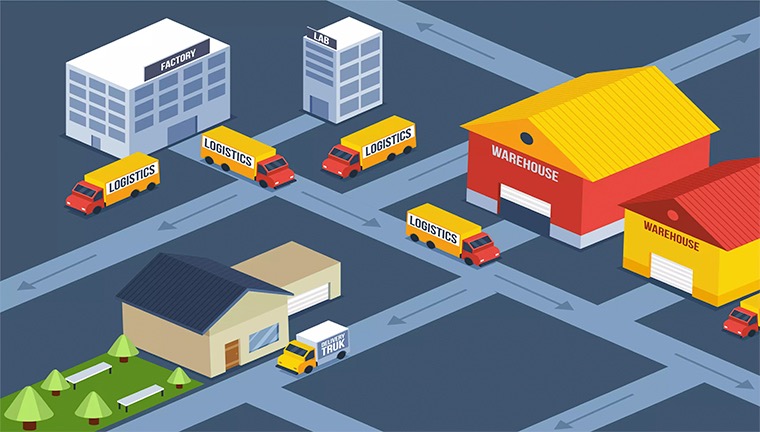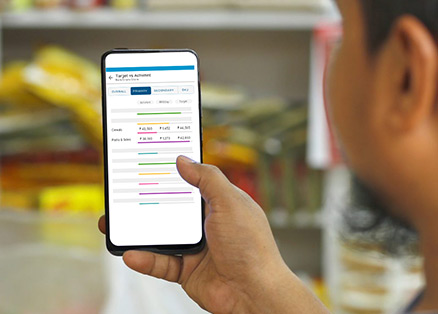The good ol’ Data!!
What is data? How is it generated? What is it used for? How did it help humanity? These are some questions that come to mind whenever one sees or reads something. But the funny thing about data is that one cannot answer the above questions about it without having proper data, not even us sales force automation software experts!
In a simplifying form, data is a set of facts respective to variables. But isn’t data information? No. It is information only when it is organized and useful. Data is collected, organized, measured, and analyzed to extract useful information and present it in a pictorial form like a graph, table, chart, etc. When this process is completed then Data becomes Information.
Needless to say, this data/information is something that has helped each and every organization in this world to assess their past to judge their present so that they can take prudential measures for their future (or depreciative measures if you are feeling adventurous and a little bit out of your mind).
This sounds simple and straight forward, but no initiatives in this world have been easy. To organize, measure, and analyze data, one needs to have data first. Initially, this, Data collection, was the most challenging task.
Table of Contents
ToggleHistory of Data and Analytics
The history of data collection and analytics is rooted in statistics which is said to have marked its beginning when pyramids were being built. The Egyptians conducted a periodic census that marked the beginning of something so extraordinary that helped mankind perform herculean tasks with such ease which was tough to imagine long ago. The processes then evolved with humanity. Some of them being tedious, some cumbersome, some humongous. But of course, there were notable contributions by some which were no less than a miracle. A classic example will justify the previous statement.
“The 1880 Census in the US took over 7 years to process the collected data and to arrive at a final report. In order to shorten the time it takes for creating the Census, in 1890, Herman Hollerith invented the ‘Tabulating Machine’. This machine was capable of systematically processing data recorded on punch cards. Thanks to the Tabulating Machine, the 1890 census finished in only 18 months and on a much smaller budget.”
“The great economic collapse of 2008 led to a loss of 8 million jobs and trillions of dollars. As we begin to list probable causes—incorrect balance sheets, factitious mortgage loan applications, incomplete data relating to systemic risk—they all trace back to one simplified term: poor data.”
Developments towards Betterment
This will not be tough to imagine what a great deal of mismanagement and painstaking people had to go through initially. But not for long. The invention of Computers in the first half of the 20th century revolutionized Data collection as well as Analytics.
After Computers had happened to mankind, various development kept on emerging and taking humanity one step closer to the uniformity of data. In fact “data” collection became organized in the form of ‘Database’. A ‘Database’ had tables, indices, reports with the help of which user could process information.
After Computers had happened to mankind, various development kept on emerging and taking humanity one step closer to the uniformity of data. The ‘data’ which was being collected started to become organized in the form of ‘Database’. A ‘Database’ had tables, indices, reports with the help of which user could process information.
The Turning Point
Ushering in the age of desktop computing was a turning point in database management in the 80s. Relational Databases allow users to retrieve data from Databases with the help of queries that became fairly easy for them to extract data and convert it into information. This puts the data stored in the databases to be used for a greater purpose.
Those greater purposes not only serve as efficient and productive for companies who use this approach but also as precedents for the remnants. Be it FMCG, Hosiery, Auto, or Pharmaceuticals Industry, you name it, analysis of data became the foundation tool of decision-makers both for understanding the present scenario as well as planning future targets.
Unbound Scope of Data Analytics
One of the best things about Data Analytics is that it not limited by the shackles of time. It can also be predictive in nature. Identifying patterns and trends to predict behavior is one metaphysical power that Predictive Analytics confers. Relatively a new branch of analytics, it helps us forecast future possibilities, redesign our strategies, and implement them in an efficacious fashion. It has been implemented in Actuarial Sciences, Telecommunications, Financial Services, and Travel, etc. all over the world and has produced marvelous results. This is how unbound Data Analytics is!
Conclusion
It is incredible that approximately 2.5 quintillion bytes of data are produced every day all over the world. But what’s alarming is the fact that only a marginal fraction of this staggering number is Information. In order to succeed today, businesses need to recognize the real valuable units out of large volumes.
To identify those valuable units, one needs to keep a check on performance driving factors as well as challenging factors. While the whole world is becoming an acquaintance to everyone, businesses need to have a tool that provides an optimal solution. Data Analytics provides this solution that comprises all the contributing factors and provide Optimization. As a sfa app provider, we rely heavily on data to analyze the past and present as well as optimize the future.
We would like to know if you have this optimization?
(References: Flydata.com, IBM.com)
About Post Author
Rashmi Kapse
Rashmi is a Content Specialist at FieldAssist. After spending 11 years in the Executive Search business she decided to change tracks and follow her passion for writing. For the past 8 years, she has been writing on Sales Tech, HR Tech, FMCG, Consumer Goods, F&B and Health & Wellness.











